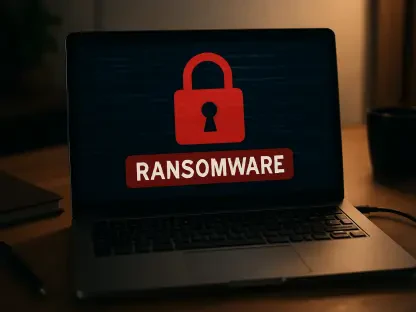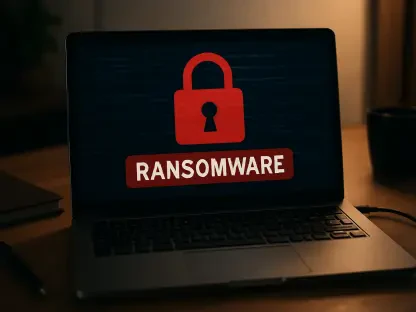In a decisive move to tackle the escalating threat of cybercrime, the United States has unveiled a powerful initiative aimed at dismantling sophisticated scam centers operating out of Southeast Asia, where countries like Myanmar, Cambodia, and Laos have become hubs for criminal syndicates. Often connected to transnational Chinese organized crime, these groups have swindled billions of dollars from victims across the globe, with a substantial portion of the losses impacting American citizens. These operations exploit vulnerable individuals through intricate schemes, leveraging technology to mask their illicit activities. To counter this growing menace, the US government has introduced the Scam Center Strike Force, a pioneering collaboration of federal agencies tasked with disrupting these networks, recovering stolen assets, and holding perpetrators accountable. This development marks a significant escalation in the fight against cyber fraud, addressing not only the financial devastation but also the profound human toll exacted by these criminal enterprises.
Unveiling the Scope of a Global Cybercrime Crisis
The magnitude of the financial damage caused by Southeast Asian scam centers is nothing short of staggering, with American victims alone losing over $9 billion in the past year, a figure that experts believe could be vastly underreported. These criminal operations, which often generate tens of billions globally, have become deeply embedded in the economies of their host nations, with some countries seeing scam proceeds account for a significant percentage of their GDP. This economic entanglement poses a unique challenge, as the illicit gains fuel local systems while draining resources from victims worldwide. The scams, frequently executed through digital platforms, exploit trust and anonymity, making them a pervasive threat to global financial security. Beyond the raw numbers, the audacity of these schemes reveals a well-organized underworld that thrives on exploiting gaps in international law enforcement, highlighting the urgent need for a coordinated response to curb their reach and impact.
Another critical dimension of this crisis lies in the human suffering it perpetuates, with an estimated 400,000 individuals from over 70 countries trapped in forced labor or even slavery within these scam compounds. These victims, often lured under false pretenses, are coerced into participating in fraudulent activities under brutal conditions, revealing a harrowing intersection of financial crime and human rights abuses. The State Department has emphasized the scale of this exploitation, painting a grim picture of sprawling operations that rely on human trafficking to sustain their profitability. This aspect of the scam centers transforms the issue into a humanitarian emergency, demanding not just legal action but also international advocacy to rescue and rehabilitate those ensnared. The sheer number of lives destroyed underscores why this problem cannot be addressed solely through financial recovery efforts, but must also prioritize dismantling the oppressive structures that enable such widespread abuse.
Decoding the Mechanics of Sophisticated Scams
At the heart of these criminal enterprises are schemes often dubbed “pig butchering,” where victims are meticulously groomed through fake romantic relationships or fraudulent investment opportunities, only to be stripped of their savings. These scams frequently utilize cryptocurrency, capitalizing on its anonymity and rapid cross-border transfer capabilities to obscure the flow of stolen funds. This technological edge complicates efforts by authorities to trace transactions or intercept illicit gains, allowing scammers to operate with a degree of impunity. The emotional manipulation involved in these schemes adds another layer of cruelty, as victims are often left not only financially ruined but also psychologically scarred. Understanding the mechanics of these scams is crucial for developing effective countermeasures, as it reveals the blend of social engineering and digital tools that make them so devastatingly successful.
The reliance on cryptocurrency also points to a broader challenge in regulating emerging financial technologies that, while innovative, can be weaponized by criminals if left unchecked. The speed at which funds can be moved across jurisdictions often outpaces the ability of law enforcement to respond, creating a cat-and-mouse game where scammers hold a temporary advantage. Additionally, the global nature of these transactions means that no single country can tackle the issue in isolation, necessitating international cooperation to close loopholes exploited by these syndicates. Efforts to educate the public about the warning signs of such scams must be paired with technological solutions to track and block illicit transactions. This dual approach could help mitigate the damage, but it requires significant resources and coordination to match the sophistication of the criminals orchestrating these widespread frauds.
A Multi-Agency Offensive Takes Shape
In response to this burgeoning threat, the US government has rolled out the Scam Center Strike Force, a historic collaboration announced on November 12, uniting the Departments of Justice, Treasury, State, and Homeland Security. This multi-agency task force is designed to target the masterminds behind these scam operations, focusing on dismantling their networks through asset seizures, legal prosecutions, and infrastructure disruption within US jurisdiction. Early successes, such as the US Secret Service recovering nearly $500 million in stolen funds over the past year, demonstrate the potential of this unified approach to make a tangible dent in cybercrime. By pooling expertise from diverse fields, the Strike Force aims to address the multifaceted nature of these scams, ensuring that financial, legal, and operational strategies work in tandem to maximize impact against these elusive criminal organizations.
Beyond direct enforcement, the initiative employs a range of diplomatic and punitive measures to pressure host countries into action, including visa restrictions on corrupt officials, rewards of up to $25 million for information on key syndicate leaders, and sanctions on entities supporting scam infrastructure. These tools are intended to disrupt the enabling environment that allows scam centers to flourish, particularly in nations where economic benefits from illicit proceeds create resistance to crackdowns. The focus on international accountability reflects an understanding that domestic actions alone cannot fully address a problem with such deep global roots. While these measures signal a strong stance, their effectiveness hinges on sustained diplomatic engagement to shift the incentives for countries currently complicit in or tolerant of these criminal activities, marking a critical test for the Strike Force’s broader strategy.
Navigating Geopolitical Hurdles and Building Alliances
One of the most formidable obstacles facing the Scam Center Strike Force is the geopolitical complexity of dealing with Southeast Asian nations that derive significant economic benefits from scam operations, with some estimates suggesting that in Cambodia, such proceeds account for 40% of GDP. This financial dependency creates a reluctance to dismantle scam centers, as local economies and even political structures may be intertwined with these illicit gains. Navigating this delicate balance requires the US to apply targeted pressure while avoiding alienation that could hinder cooperation. Exploring partnerships with allies such as China and the European Union offers a pathway to amplify international leverage, potentially shifting the calculus for host countries to prioritize cracking down on these criminal hubs over short-term economic gains.
Equally important is the recognition that government efforts must be complemented by private-sector involvement to achieve lasting results, with companies like Meta and Microsoft already contributing expertise to the fight. Concerns over the misuse of technologies, such as satellite networks being exploited by scammers, have prompted calls for stricter oversight and collaboration with tech providers to secure digital infrastructure. This public-private synergy is viewed as essential, given that much of the terrain where scams proliferate—online platforms and telecommunications networks—is controlled by industry players. Strengthening these partnerships can help fortify defenses against cybercrime, ensuring that technological advancements do not become tools for exploitation. The path forward demands a unified front, blending governmental authority with corporate responsibility to safeguard the digital landscape from criminal abuse.
Forging a Path Toward Global Accountability
Reflecting on the decisive steps taken, the launch of the Scam Center Strike Force stands as a landmark moment in the battle against Southeast Asian scam centers that had long operated with impunity. The coordinated efforts across multiple US agencies have already begun to yield results, with substantial asset recoveries and strategic sanctions aimed at disrupting criminal networks. The integration of diplomatic tools and international pressure has started to lay the groundwork for holding complicit nations accountable, while early collaborations with private entities show promise in securing vulnerable digital spaces. Looking ahead, the focus must shift to sustaining this momentum through expanded global partnerships and innovative solutions to track and neutralize evolving scam tactics. Prioritizing the rescue of forced laborers within these compounds remains a critical humanitarian goal, alongside public education campaigns to prevent future victims. These combined efforts offer a blueprint for not just reacting to cybercrime, but proactively reshaping the environment to prevent its resurgence.









